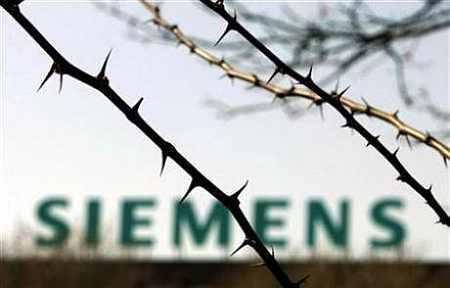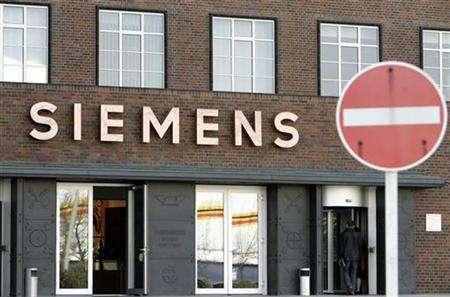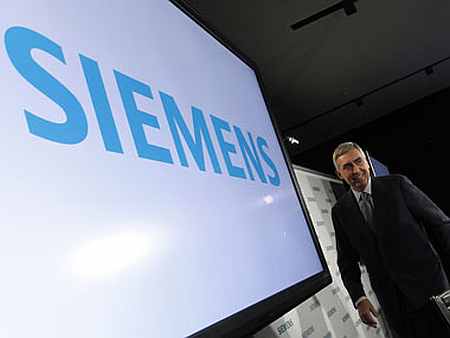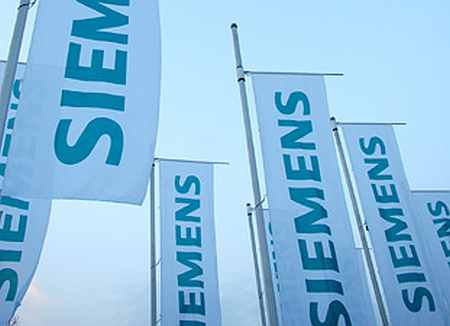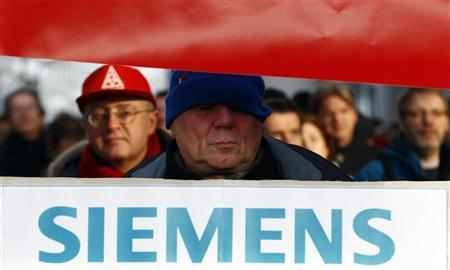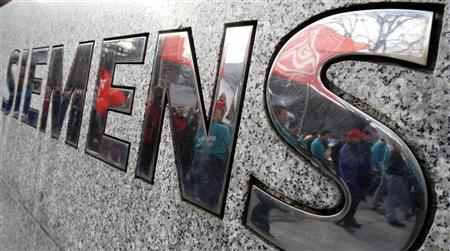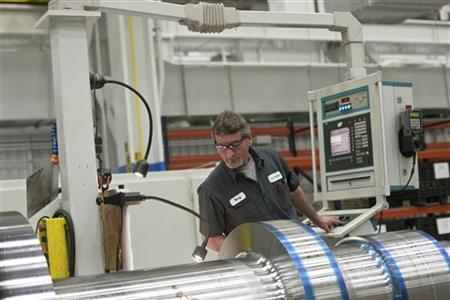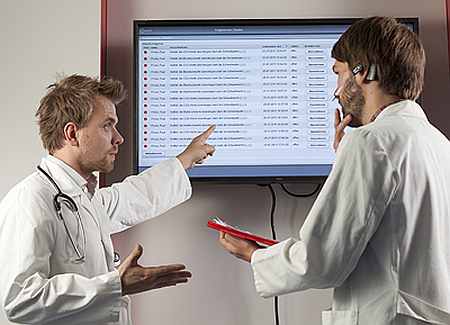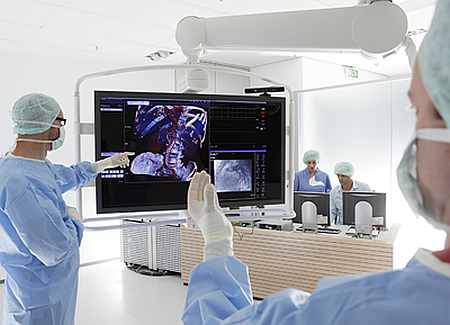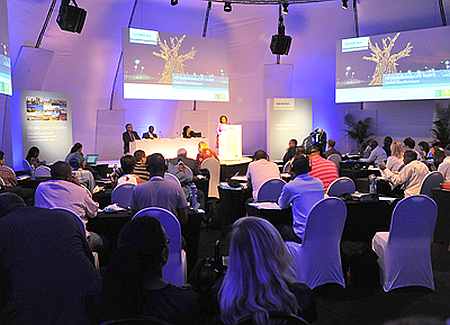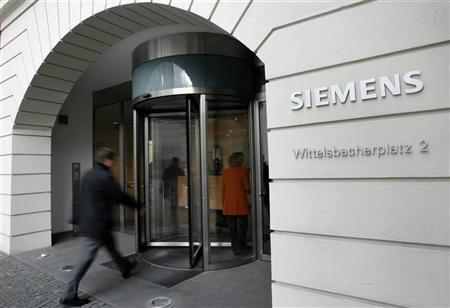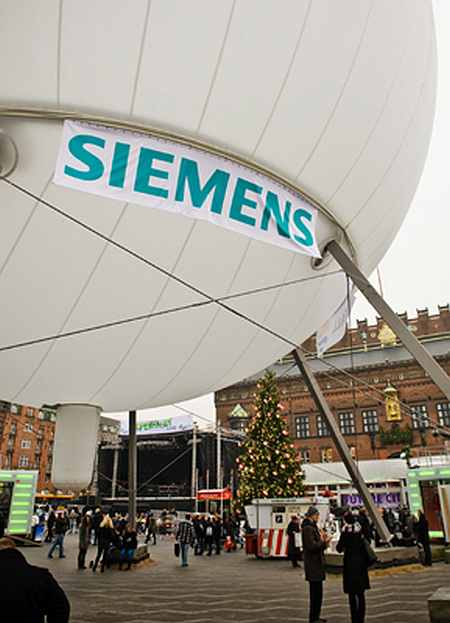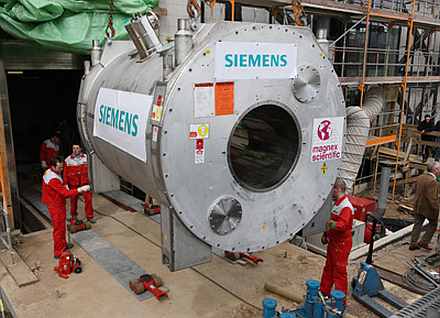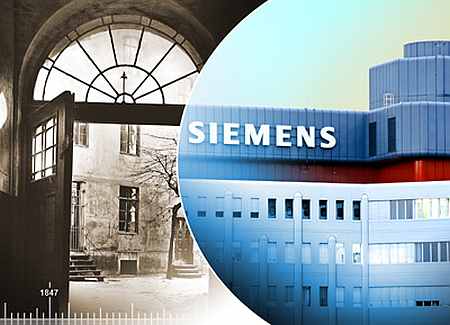 | « Back to article | Print this article |
How Siemens is learning to be 'smart'
The acronym SMART refers to the new DNA of Siemens, changing its worldview in the process. And hubs like India and China are the cornerstones, nudging the much needed change to address the exploding needs of the emerging markets.
It's been a frantic last few weeks for Ranjeet Dalvi and his corporate strategy and business excellence team at the Siemens India headquarters. Dalvi's trusted lieutenant Nirmal Gandhi especially has been keeping long hours, meticulously charting out a day-and-a-half long strategic brainstorming session for 80 of their colleagues.
Some came from the German headquarters; some others arrived from the corporation's global outposts in the US, Switzerland and Singapore. A bunch were Gandhi's emerging market peers from China, Brazil and Hong Kong, his partners in a strategic initiative that is setting a new template for the storied European multinational in key markets.
After Shanghai and Beijing, last fortnight's SMART Day was travelling to India for the first time in its three year history.
Click NEXT to read more...
How Siemens is learning to be 'smart'
"The rationale is to be interactive and share ideas, knowledge and learnings, discuss success stories, strategies and even ponder about the urgent challenges among a community of project and product managers, business development teams, R&D and strategy managers," says Gandhi, chief manager, Strategy Projects, Siemens Ltd, sitting in his fifth floor cubicle.
He just got back from the company's Vadodra plant visit with his fellow German colleagues. "We make industrial turbines there. Two to three more SMART products are also planned there," he clarifies.
The acronym SMART refers to the new DNA of Siemens, changing its worldview in the process. And hubs like India and China are the cornerstones, nudging the much needed change to address the exploding needs of the emerging markets.
Click NEXT to read more...
How Siemens is learning to be 'smart'
These simple, maintenance friendly, affordable and timely-to-market portfolio of "basic" products and solutions are a euro 240 billion future for Siemens worldwide. India alone is a euro 21 billion bet.
Sans the management speak and snappy adjectives, these machines are on an average 40 to 60 per cent cheaper than the feature-rich, high-technology electronics and electrical engineering offerings that Siemens has always been known for.
SMART therefore is tailor made for the low- and mid-level technology markets which happen to be very price sensitive whether they are in India or in China.
"Growth was always our focus. We were exploring cost competitive drivers," says Dalvi, executive vice-president, Corporate Strategy & Business Excellence, and adds, "many of our products were imported, therefore they have been expensive.
Click NEXT to read more...
How Siemens is learning to be 'smart'
A large chunk of India, we figured, needs basic products. Yet they need to cater to Indian conditions, have to withstand dust and humidity, and handle power and voltage fluctuations."
That's where localisation and custom makes come in. The SMART portfolio -- fully designed, manufactured and marketed in India -- acts as a portal to penetrate markets and segments where the company's presence has historically been low. The bottom of the pyramid was never really a prime focus. But now things seem to be changing.
Within three years, the new agenda has started yielding dividends, clocking double digit revenues from India alone.
Click NEXT to read more...
How Siemens is learning to be 'smart'
The principles and the strike rate are similar across Asia, echoing similar need patterns in its different markets. China and India are the clear trailblazers where 80 per cent of the global SMART range has already been introduced.
Armin Bruck, Siemens India Managing Director for the last four years, however, introduces a caveat. "SMART is not cheap, stripped down products," he says, "it means matching technical aspirations at prices that are affordable."
The market feedback was clear. Many Indian engineers from smaller companies are fully conversant with the latest technologies, but are not willing to pay top dollars for them. "Therefore, we started to tailor the products for these local customers. Designed, manufactured locally to capture the price advantage and lower the cost overheads," says Bruck.
Click NEXT to read more...
How Siemens is learning to be 'smart'
Traditionally, it was the M1 and M2 segments of the market that Siemens has been catering to. M1 is niche, price inelastic and the high-end consumer of the all-frills, top end products.
Then comes M2, a category where buyers seek specific solutions for their requirements, and will pay if it is available. M4 is the other extreme -- more of a commodity play, not choosy about technology or make. Copyright and IPR infringement is equally rampant. So the verdict: best avoided.
M3 is the goldmine. "People here are still looking at quality products but with basic minimum features. The segment is conscious of price sensitivity," Gandhi breaks it down threadbare. And that's where Siemens has moved in. In effect, you protect the base to protect the top of the pyramid.
Click NEXT to read more...
How Siemens is learning to be 'smart'
SMART is what the (Volkswagen) Vento and (Skoda) Rapid are in the automobile market -- the German comparison is unavoidable.
The breakthrough innovations have been diverse. First came a basic X-ray machine Multimobi from the Goa plant in 2009, followed by a new steam turbine, the world's first 1,200-kv circuit breaker for power plants, low voltage switchgears, low-end signaling system for railways, water treatment products, a machine to monitor foetal heart beat and even a baggage handling conveyor belt, currently installed at the New Delhi airport's swanky Terminal 3.
Many like the X-ray machines or the signaling systems are exported, the former to 40 countries already. Malaysian Railways is installing the railway solutions from India.
Click NEXT to read more...
How Siemens is learning to be 'smart'
"The SMART switchgears and numerical relays have helped us significantly cut down operations and maintenance cost at our Gujarat refinery. For five years, no shutdown will be required for the electrical distribution system of the plant.
Because there will be no breakdown, our reliability and profits will also go up. These products also save 50 per cent space," observes Mayur Budh, a senior maintainence department official at Essar Oil's Vadinar refinery.
Sunil Bhore, director of the Pune-based water treatment and management firm Aquatech, too is ecstatic. "We compete for global tenders. So price competitiveness is critical. SMART offers great technology at an even greater price. Our costs are down 40 per cent."
But SMART's conception was modest. In fact it was somewhat of a covert operation, a "submarine assignment" as Bruck calls it.
Click NEXT to read more...
How Siemens is learning to be 'smart'
Submarine Beginnings
It was more of a trial and error exercise that had a quiet encouragement from the local top brass. Germany had no inkling.
"We called it submarine since it was not an official worldwide launch, no high level involvement of R&D across the globe and in Munich (read HQ). It was out of the box thinking in an obsessively process-driven company to cater to unique needs of the hour," remembers Bruck.
There was no fanfare. No fuss in its birth. The seeds sprouted with budgets that were actually outside the official R&D sanctions.
Click NEXT to read more...
How Siemens is learning to be 'smart'
Bruck had thought once Multimobi was born -- practically from scratch using very little of the existing technology -- everybody will be forced to market it, may be even grudgingly. But much to his surprise, the timing seemed providential.
Siemens AG at the very top was undergoing drastic change and the new CEO, Austria-born Peter Loscher, was keen on thought leadership.
So this overnight became a SMART new business idea and ever since has dominated the management thinking at the company. "It mirrored the transition that Siemens as a global corporation was going through. This was a positive thinking strategy," says Bruck. Interestingly, it found immediate resonance across Brazil, China and other breakout markets, making it a global phenomenon.
Click NEXT to read more...
How Siemens is learning to be 'smart'
The inflection point is today. "Last year, 50 per cent of the time in the Berlin conference of the entire Siemens global top management, was spent on SMART strategies. Top talent from India and China were invited to present solutions," Bruck's pride is quite evident.
One of his most memorable moments was when at Siemens AG, the India subsidiary was ranked the second best regional company in 2010-11, ahead of US and China and just below Germany.
To be honest, necessity has also been the mother of the SMART inventions. If Siemens did not address the bottom of the pyramid, its nimble footed European and Asian rivals would have completely outmaneuvered it from a crowded and fiercely competitive market. "If we don't, others will. And very soon there will be hell on earth for us," Bruck says.
Click NEXT to read more...
How Siemens is learning to be 'smart'
Statistics will make it easier to grapple with the global situation. Growth markets like India or China can make or break the corporate backbone. Last fiscal (October 2010-September 2011), while revenues of the diversified German parent rose 7 per cent, in India, Siemens Ltd leaped ahead with a 28 per cent surge in sales.
India is increasingly playing a larger role in the company's global operations.
And as the opportunity quadruples, the infrastructure too is getting beefed up. Siemens is not forfeiting its original strength. "High tech and its basic counterpart are two pillars who should grow symbiotically. You need them both," feels Bruck. "The ultimate aim, therefore, would be to add more features in a single product, yet be affordable. That's an unbeatable formula.
Click NEXT to read more...
How Siemens is learning to be 'smart'
It's an ongoing quest. So in just two-three years, Siemens has almost doubled its manufacturing footprint to 21 factories locally. Of the 10 units added, half are driven by SMART initiatives. It's more or less an even distribution among all the four priority business verticals or "sectors" -- industry, healthcare, energy and the latest, infrastructure and city solutions. These came up as there was no local manufacturing base and only assembling units handled the imports.
Even existing plants -- switchgear and switchboards in Kalwa (on the outskirts of Mumbai), the gear box factory in Chennai, isolators (high voltage switchgear) in Hyderabad, and the steam turbine factory in Baroda -- have seen brownfield expansions to meet the new demand.
Click NEXT to read more...
How Siemens is learning to be 'smart'
At least three more facilities are coming up in Nashik, Baroda and Vizag over the next 12-24 months with Rs 1,600 crore investments. "India can easily grow into a euro 30-40 billion opportunity. And 60-70 of that can be SMART solutions. Already its revenues have doubled," says Dalvi. "But China alone has a ^90 billion market opportunity."
There are pockets with high potential like healthcare. For Siemens, Indian healthcare alone is a "billion euro spent a year" market in diagnostics technologies and products.
"But I am absolutely convinced that we could talk about a euro 5 billion a year market, if we are able to reduce the cost of all our products by 50 per cent," says Bruck.
Click NEXT to read more...
How Siemens is learning to be 'smart'
Unique in India
With 1.3 hospital beds per 1,000 population, India's figures are abysmal. Even Africa has 1.5 while the global average is 3-3.5. "In India you have less than nothing. What's the point of just focusing on infrastructure?
You need healthy people to drive that infrastructure and growth forward," says Bruck. He has identified this huge vacuum to blend his corporate strategy with his social responsibilities. Healthcare, as he sees it, is the bed rock of a healthy country. Naturally in India, it has been amongst the most important verticals.
Similarly, forays into renewable energy with wind and steam turbines and solar thermal receivers will be the next big frontier. The challenge like always will be to make commercially viable innovations that are best suited for local conditions, often not the most optimal in the world.
Click NEXT to read more...
How Siemens is learning to be 'smart'
What is equally amazing is the journey of an idea into a cutting edge product and how in true German precision, the corporation keeps a track of it. How it coordinates centrally with all its 220 arms is also symptomatic of the seriousness of the efforts.
The need is always generated locally as priorities differ with markets and gathering intelligence is incessant. From the sector to the division, from a cluster to a hub, there is bottom-up involvement right through.
The various relevant CEOs and their strategy teams are hands on but "the lower you go in the pyramid, the more precise you get to address the specific needs," says Bruck.
Click NEXT to read more...
How Siemens is learning to be 'smart'
There is also a central point's man -- Felix Scheffler -- to monitor all the SMART moves world over. When the annual strategic business plans are made, the big picture trends and strategy inputs may come in from a handful of global CEOs, but he incorporates the mega trends and micro operational features from inputs gathered from all across.
With the launch of a dedicated innovation platform in the in-house intranet, each and every one of 80,000 workforce can post their big ideas online. Bruck breaks it down even further.
"Some ideas will make it, some won't. But all of us will get a chance to work on them. Once an idea gets to a stage of maturity, then it's handed over to the project management teams. In this process we can motivate our teams and get a chance to examine even the craziest of thoughts. Finally, the Global Entrepreneur or a Global Sector CEO, responsible for a bunch of products or markets can adopt it."
Click NEXT to read more...
How Siemens is learning to be 'smart'
In the case of Multimobi, X-ray machines, the Indian healthcare vertical team along with strategy team and the R&D centre came up with the basic idea and then it was sent to a level above.
"We continuously evaluate our market share. For example, we were not present in wind. And this was a growing segment. But India is a low wind market. So we had to work our plans accordingly and make products that fit," adds Dalvi.
A couple of factors are key to figure out how exactly a product gets aligned to a market. Again, true to the Siemens style, it's fastidiously managed.
Click NEXT to read more...
How Siemens is learning to be 'smart'
Step by step
It's a three step process. First comes product life cycle management (PLM) or the R&D, design, product development, drawings for manufacturing bit. It actually covers the entire life cycle of a product.
What follows is the supply chain management (SCM) cycle concerning sourcing of parts and actual manufacturing and finally customer relationship management or CRM which is the go-to market step involving sales, order placements and even maintenance.
"While developing a SMART product you need to be strong in the PLM and SCM cycle. Not every country is equipped to do that. India and China has seen significant R&D investments for their potential," says Bhaskar Mandal, vice-president & head, industrial automation business.
Click NEXT to read more...
How Siemens is learning to be 'smart'
The PLM cycle is critical. The design processes get defined and then transferred to a cluster via a well defined transfer protocol as a complete "PLM package." Since 2008, India is the chosen one for the South Asia cluster of Nepal, Bangladesh and a few more neighboring markets.
"You may have a common PLM cycle for a handful of clusters. But after the designs are ready, then different clusters take charge of the CRM process. The customers are local, so are their needs. For pricing local handling also become important. Even the language in the manuals will be different," points out Mandal.
Selling to a B2B audience needs different orientation. So Siemens may conduct exhaustive multi-city road shows to launch a product, but when you are selling solutions for the smallest and the most humongous of problems simultaneously, then each sector needs to have a different sales orientation. SMART also requires one to go deeper.
Click NEXT to read more...
How Siemens is learning to be 'smart'
In metals, a sub-set of the industry verticals, the key account managers have so far been dealing with large steel companies like Tata, Bhushan Steel, Jindal Steel & Power to help them build their blast furnaces, sinter plants, casting solutions.
But now with SMART, a regional strategy has been adopted to reach out to even smaller players in the hinterlands. It's quite similar for healthcare. Dedicated sales teams are separately zoning in on both high end and basic SMART solutions.
However for products like switch gears or motors and automation, one needs extended dealership arms and networks.
So temporary low cost sales resources have also been roped in with a specific mandate.
Click NEXT to read more...
How Siemens is learning to be 'smart'
In both the energy and the infrastructure verticals, the business is tender based. So the customers are known and are easy to manage. But now with SMART, there is an added portfolio on offer.
Currently the eco-system is quite spread out: 57 sales offices all over the country handling around 400 dealers, plus 200 system houses that would actually do the last mile customisation as per a client's need and the 1,700-odd retailers.
Siemens is serious about SMART and about India. And it has prepared well for this paradigm shift. At a corporate level, last year has seen the ground being prepared for consolidation, with parent Siemens AG spending a billion euros to launch an open offer to hike its stake to 75 per cent from 55 per cent and thereby tightening its grip on its Indian arm. This clearly reflects a greater dominance of markets like India.
Click NEXT to read more...
How Siemens is learning to be 'smart'
There has been a series of restructuring exercises as well through mergers and acquisitions and divestments. But further streamlining may be necessary as the company has 10-odd firms in different areas, apart from the BSE-listed Siemens Ltd.
Most strategic has been the recent entry into non-banking financial services (NBFC) through Siemens Financial Services. This dovetails perfectly with the ongoing SMART initiatives. The NBFC will primarily finance small companies and entrepreneurs who are looking at start up shops using Siemens products.
For instance, Siemens Financial will finance doctors or hospitals that may want to buy the foetal heart rate monitor, a small device that can be worn on a belt by a pregnant woman. The hospitals or doctors can then rent it out to women during their pregnancies.
Click NEXT to read more...
How Siemens is learning to be 'smart'
Naturally then the company dismisses fears that SMART will dilute margins and volumes will eat into profitability. It's the in house competitive edge.
"Through a localised value chain and features fulfilling local requirements our SMART products are meeting local price levels, thereby ensuring profitable business," Felix Scheffler, head of corporate top+ and corporate quality management in Siemens AG paraphrases the collective sentiment.
Siemens is clearly learning to be smarter.
